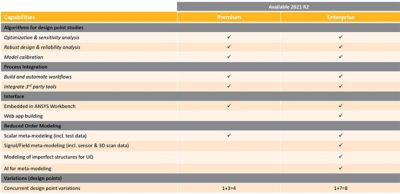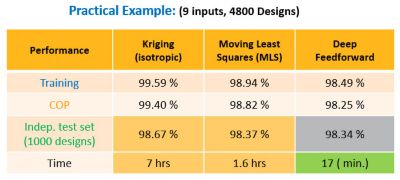-
-
Access Free Student Software
Ansys empowers the next generation of engineers
Students get free access to world-class simulation software.
-
Connect with Ansys Now!
Design your future
Connect with Ansys to explore how simulation can power your next breakthrough.
Countries & Regions
Free Trials
Products & Services
Learn
About
Back
Products & Services
Back
Learn
Ansys empowers the next generation of engineers
Students get free access to world-class simulation software.
Back
About
Design your future
Connect with Ansys to explore how simulation can power your next breakthrough.
Free Trials
ANSYS BLOG
September 15, 2021
Top 3 New Features in Ansys optiSLang
Ansys optiSLang, our process integration and design optimization software, has been updated to speed time-to-solution and democratize multiphysics simulation. In Ansys 2021 R2, optiSLang adds flexibility and accessibility with a new packaging model that includes premium and enterprise license options. optiSLang accelerates innovation through tighter integrations with Ansys Electronics Desktop and Ansys Workbench, enabling engineers to leverage the power of optiSLang directly from the solvers.
Let’s take a look at the top three optiSLang features.
Concurrent Design Point Variations
One of the most highly requested features for optiSLang is to run multiple parametric design studies concurrently. The new licensing categories, premium and enterprise, offer exactly this with added flexibility for you to choose what approach fits your needs the best.
With the premium license option, one optiSLang license lets you run up to four design point variations concurrently. With the enterprise license option, you can run up to eight design point variations for a design of experiments (DoE) study.
For example:
- One optiSLang Premium + One CFD Premium = Four concurrent Ansys Fluent variations.
- One optiSLang Enterprise + One Ansys Mechanical Enterprise = Eight concurrent Mechanical variations
Easily Generate Web Apps
For a long time, optiSLang workflows could only be run by computer-aided engineering (CAE) experts. This became a bottleneck because there are often very few experts in multiphysics simulation and optimization within an organization. optiSLang addresses this challenge by enabling experts to easily create web applications via a software wizard. With a few simple clicks, experts can provide the title, icon, and description for the app, and optiSLang takes care of packing up all the dependent files into an app to be deployed to Ansys Minerva. From Minerva, any team member who has access to the app can run the application and carry out design studies as needed.
Employ Automated AI/ML for Metamodels
The new Deep Feedforward Network (DFN) metamodel leverages the latest artificial intelligence/machine learning (AI/ML) technology using neural networks to significantly reduce the time it takes to run thousands of designs. This is possible because the DFN metamodel works with Smart Layout to automatically find the best configuration. In one example, we ran 4,800 designs with nine inputs and found that the time it took was only 17 minutes for all the design runs, which was an 81% reduction.
For more information watch the on-demand webinar: Ansys 2021 R2: What's New in Ansys optiSLang.

